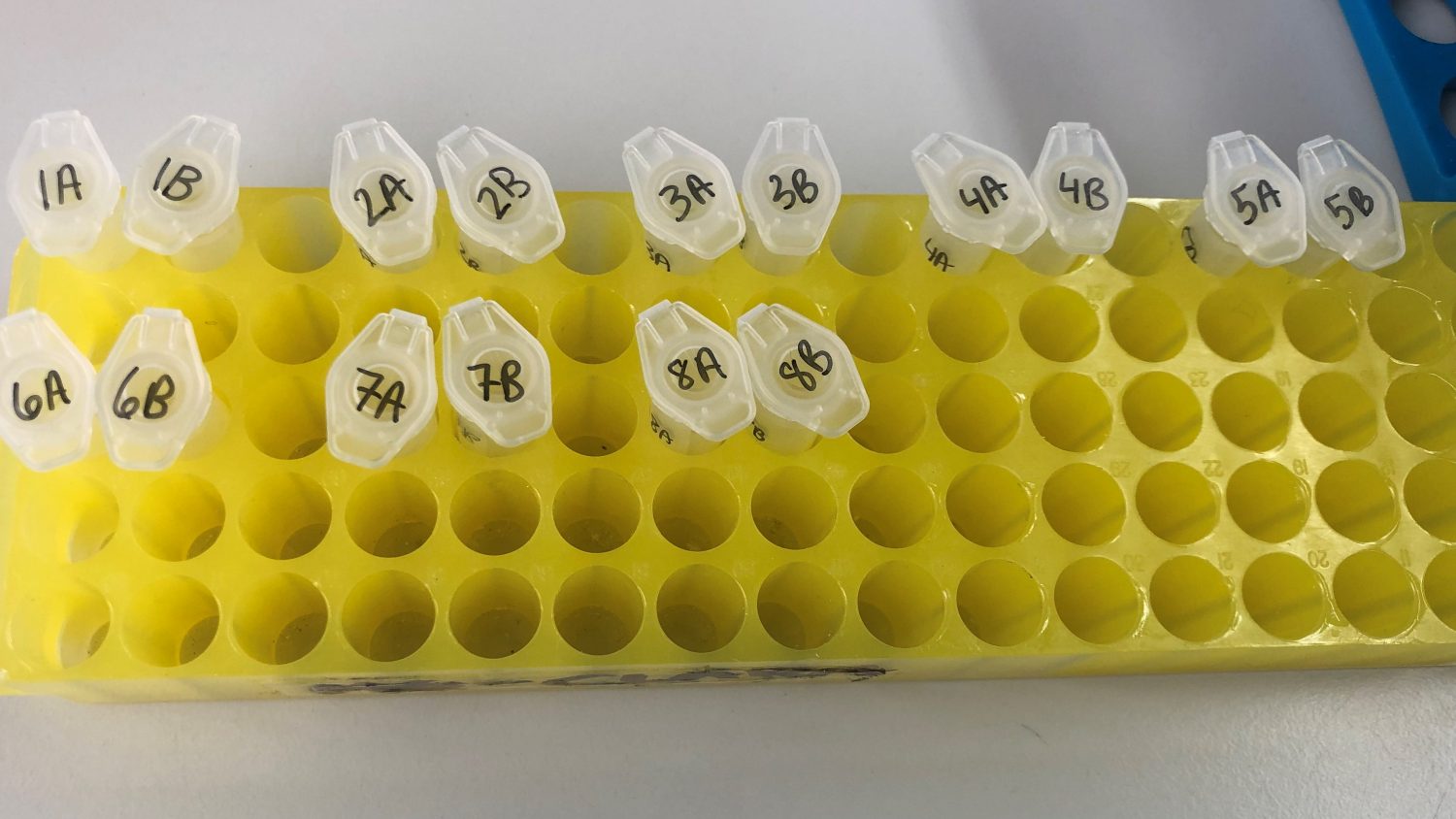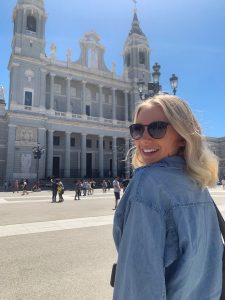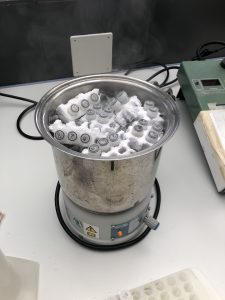
DNA extractions, separate supernantant into two tubes to improve purification
Written by Kelsey Kolar
The first week of work is over! To celebrate, I traveled to Madrid over the weekend and visited a friend studying there. I got to see the royal palace, the cathedral, palace gardens, main plazas, lavish markets, and delicious tapas. I have found out that tapas are a time warp! You sit down with some friends for a quick bite and somehow it’s 3 hours later. My boss and mentor, Dr. Miguel Gueimonde was very adamant about me working and “living” during my time in Spain. Monday through Friday I dedicate my days to my research and necessary protocols, but the weekends I balance with adventures and travels!


I feel fully immersed and passionate about my research. I even got my own samples box, work bench, and materials (I thought I would have to use someone else’s for my short time here). This made me feel like a part of the IPLA team! Although two months is much shorter than I thought, I am excited about our research plan previously discussed. Week 2, and we are already on the second step of our plan- DNA extractions. This protocol fills most of my days and takes roughly 6 hours to complete, but the end goal makes the process worthwhile! We isolate and purify the DNA of infant fecal samples at different time marks to access bacterial presence and abundance. The isolated DNA is tested to access DNA concentration.



In time, I am looking forward to moving onto the third step of our research plan where we will sequence the DNA, run gas chromatography to access metabolites, and perform qPCR for bacterial abundance. In the following weeks, I hope to share more about the analysis portion of my research!